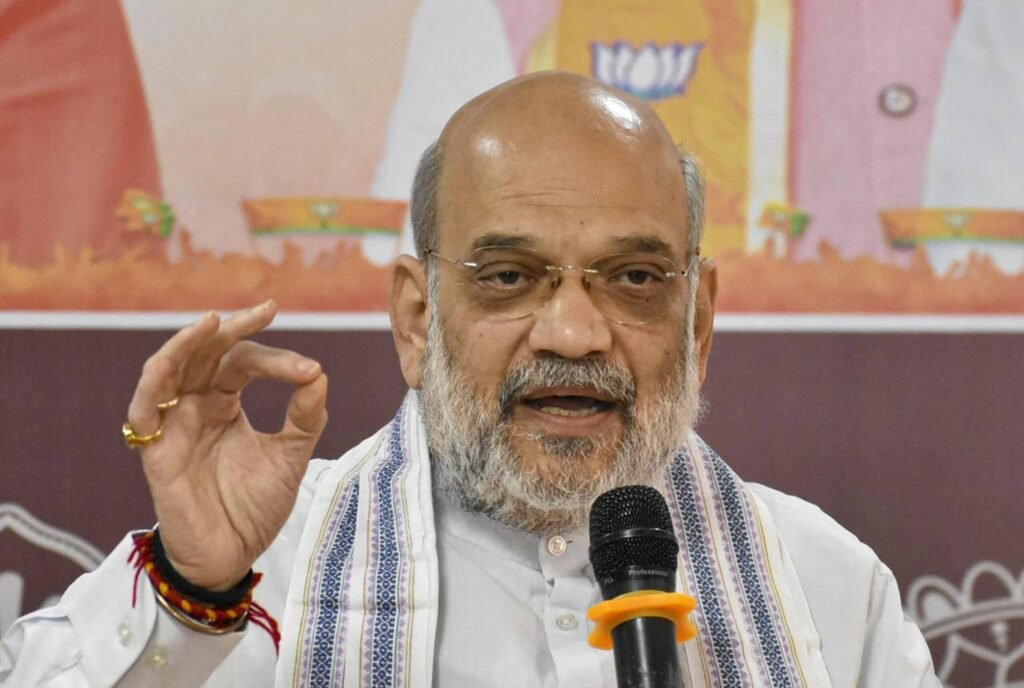JAIPUR, July 17 — In a transformative step toward digitising India’s rural dairy economy, Union Home and Cooperation Minister Amit Shah inaugurated the country’s first automated online registration system for dairy cooperatives, under the White Revolution 2.0 initiative. The announcement was made at the Sahkar Utsav, an event organised by the Rajasthan Cooperative Dairy Federation (RCDF).
The reform is being hailed as a milestone in streamlining cooperative governance, enabling transparency, efficiency, and the nationwide integration of dairy societies into India’s formal agricultural value chain.
🔍 What the Digital Dairy Reform Involves
The new system will allow Primary Dairy Cooperative Societies (PDCS) to register themselves through the e-Mitra portal, Rajasthan’s flagship citizen service platform. Once their registration is authenticated:
- Societies receive a unique digital ID
- They are authorised to begin operations immediately
- Based on performance, PDCS units can evolve into Dairy Cooperative Societies (DCS) and later into Multi-Functional Dairy Cooperatives
The system ensures end-to-end digital traceability from registration to operations. It is expected to be rolled out nationwide with support from the Ministry of Cooperation, National Dairy Development Board (NDDB), and state federations.
✅ How This Will Help India’s Dairy Sector
1. 🏢 Faster & Transparent Registration
Traditional registration processes for dairy cooperatives involved manual paperwork, bureaucratic delays, and inconsistent validation procedures. The new system:
- Reduces paperwork through an automated, online interface
- Cuts down registration time from weeks to just a few days
- Prevents duplication and fraud through digital verification
This is especially beneficial for remote or tribal areas, where cooperative formation often faces administrative bottlenecks.
2. 📊 Improved Data Accuracy and Planning
Each cooperative will be assigned a digital identity, enabling real-time tracking of:
- Milk procurement volumes
- Farmer participation
- Financial transactions
- Supply chain touchpoints
This data-rich environment supports better policy decisions, fund allocation, and milk pricing models—benefiting both governments and cooperatives.
3. 📈 Enabling Growth-Linked Upgradation
With performance tracking built into the platform, PDCS units can be automatically evaluated for their efficiency, transparency, and service coverage. High-performing societies can be upgraded to:
- DCS: With expanded operations, credit access, and training
- Multi-Functional DCS: Offering fodder, AI services, milk processing, marketing, and more
This model fosters healthy competition and promotes institutional strengthening throughout the cooperative ecosystem.
4. 🌍 Laying Groundwork for Export & Traceability
With traceable IDs and digital records, the reform aligns India’s dairy sector with global food safety and quality benchmarks. This will help:
- Build trust with export markets (EU, Gulf, Southeast Asia)
- Strengthen compliance for food traceability and sustainability audits
- Integrate with blockchain systems in future dairy logistics
5. 🧑🌾 Empowering Small Farmers and Women
Over 75% of India’s dairy consists of women, and the milk originates from smallholder farms. Digitising the cooperative model gives these producers:
- Direct access to cooperative benefits and schemes
- Reduced dependency on intermediaries
- Better price realisation and market visibility
Combined with other reforms under White Revolution 2.0, this move supports the government’s Five-P vision: People, PACS (Primary Agricultural Credit Societies), Platform, Policy, Prosperity.
⚠️ Key Challenges Ahead
Despite the promising architecture, a few implementation risks remain:
- Digital access and literacy gaps in rural areas must be addressed
- Need for capacity building and training modules for cooperative staff
- Cybersecurity and data protection measures must be standardised
- Ensuring system integration with NDDB, state federations, and payment portals
Experts recommend strong public-private partnerships, localised training initiatives, and regular feedback loops during the rollout.
🗣️ Expert View
“This reform has the potential to revolutionize India’s cooperative dairy structure. But its success will depend on how inclusively and securely it is implemented across India’s diverse dairy geography,”
— Prashant Tripathi, Dairy Policy Advisor & Digital AgTech Specialist
🔚 Conclusion: A New Chapter for Indian Dairy
Amit Shah’s launch of the digital cooperative registration module marks a shift from bureaucratic procedures to a tech-led, farmer-first approach. It paves the way for a more agile, accountable, and scalable dairy cooperative network—at a time when India is poised to lead not only in milk production but also in digital cooperative governance.
If implemented effectively, this initiative could become the blueprint for cooperative reform across various sectors, from agriculture to fisheries and beyond.
